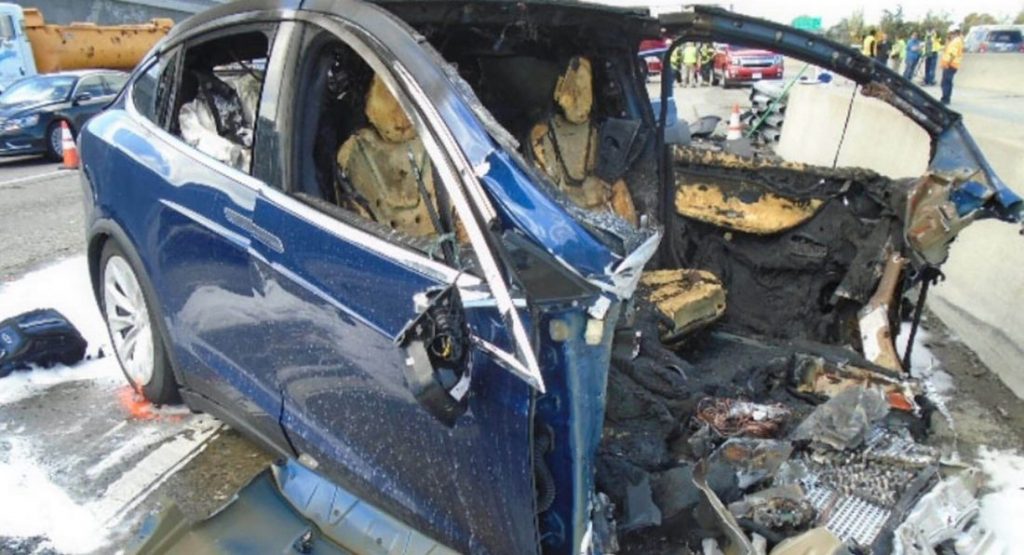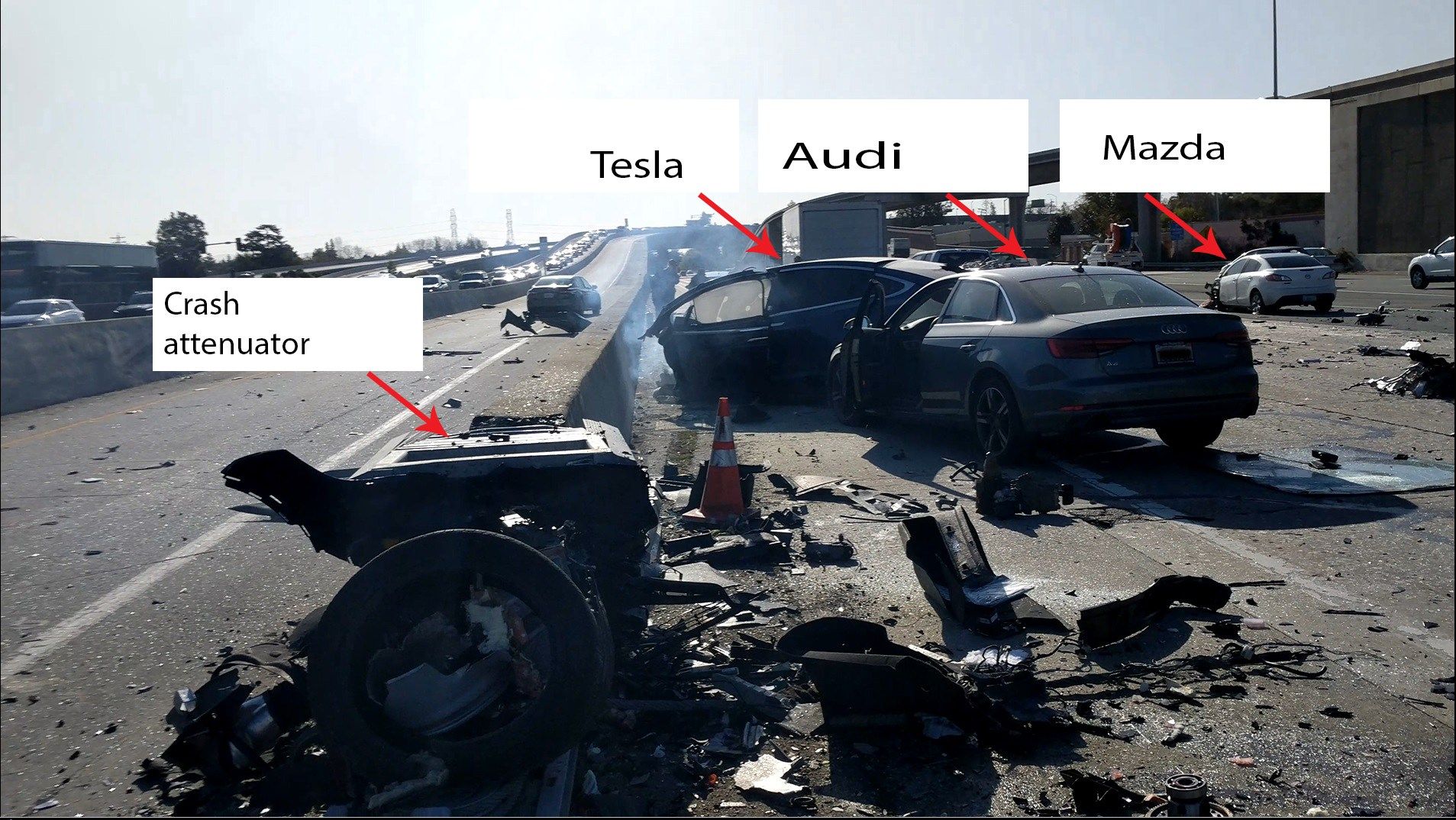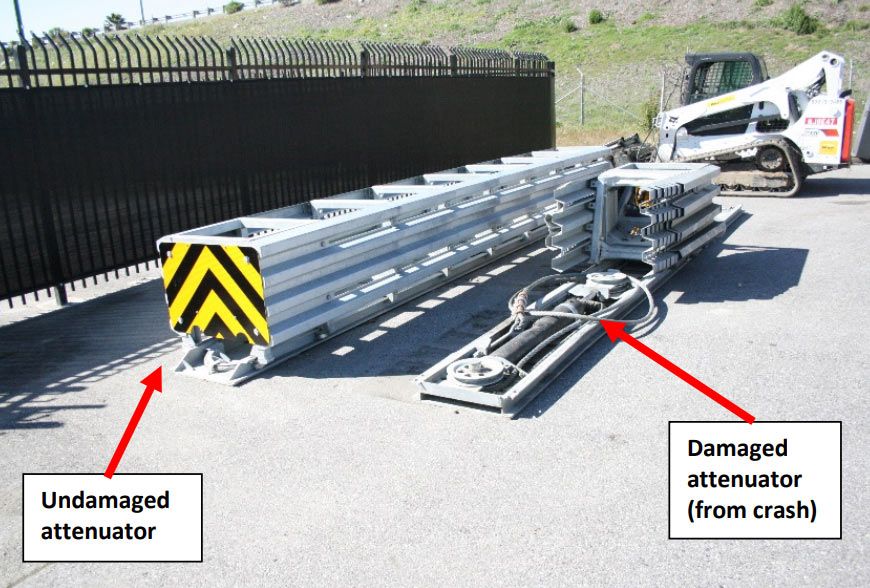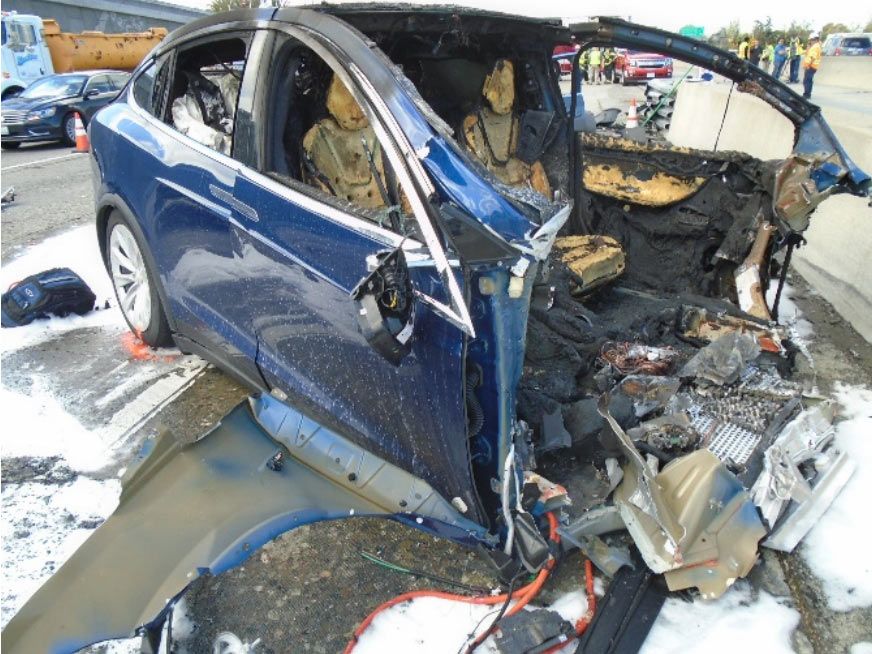The National Transportation Safety Board (NTSB) has released its preliminary report (PDF) on the fatal accident that involved a Tesla Model X in Autopilot mode.
While the report is still preliminary and subject to change, the NTSB says the accident occurred in Mountain View, California on March 23rd at approximately 9:27 am PDT. The 2017 Tesla Model X P100D was traveling south on US Highway 101 in a high-occupancy-vehicle lane.
According to data retrieved from the crossover, the 38-year-old driver was using the “advanced driver assistance features traffic-aware cruise control and autosteer lane-keeping assistance, which Tesla refers to as Autopilot.” As the Model X approved a “paved gore area” dividing the main lanes of US-101 from the SH-85 exit ramp, the crossover moved to the left and entered the gore area.
The Tesla continued traveling through the gore area until it struck a crash attenuator, which was mounted on the end of a concrete barrier, at a speed of approximately 71 mph (114 km/h). Following the collision, the Tesla rotated counterclockwise and the front portion of the vehicle separated from the rest of the Model X. The crossover was also involved in subsequent collisions with a 2017 Audi A4 and a 2010 Mazda 3.
What caused the accident remains the heart of the investigation and the NTSB says the Autopilot system was engaged on four separate occasions during the 32-minute trip including continuously during the final 19 minutes prior to the collision. During these final moments, the Model X provided two visual warnings and one auditory alert for the driver to place his hands on the steering wheel. In the final minute before the collision, hands were detected on the steering wheel for just 34 seconds. In the final six seconds, no hands were detected on the wheel.
While the driver wasn’t keeping his hands on the steering wheel, it appears the Autopilot system steered the crossover into the concrete barrier. As the NTSB notes, eight seconds prior to the crash the Tesla was following a lead vehicle and traveling at around 65 mph (104 km/h). One second later, the model “began a left steering movement” while still following the lead vehicle. Four seconds before the crash, the Model X stopped following the lead vehicle and this caused the crossover to speed up as the cruise control system was set at 75 mph (120 km/h). Three seconds before the crash, the Model X increased its speed from 62 mph (100 km/h) to 70.8 mph (114 km/h).
No braking or evasive steering movements were detected prior to the collision and the NTSB says the crash breached the Model X’s lithium-ion battery pack resulting in a fire. The driver was still belted in his seat but bystanders were able to remove him from the crossover before it was engulfed in flames. The driver later died at a local hospital.
The Mountain View Fire Department extinguished the fire and the Model X was eventually transported to an impound lot in San Mateo. While at the impound lot, the Tesla’s battery “emanated smoke and audible venting.” However, a thermal imaging camera showed it wasn’t actually on fire. Five days after the crash, the battery reignited and was extinguished by the San Mateo Fire Department.
Unfortunately, the crash attenuator on the concrete barrier was damaged by an accident involving a 2010 Toyota Prius on March 12th. The NTSB didn’t make much mention of this, but it’s possible the previous damage could have reduced the attenuator’s effectiveness.








